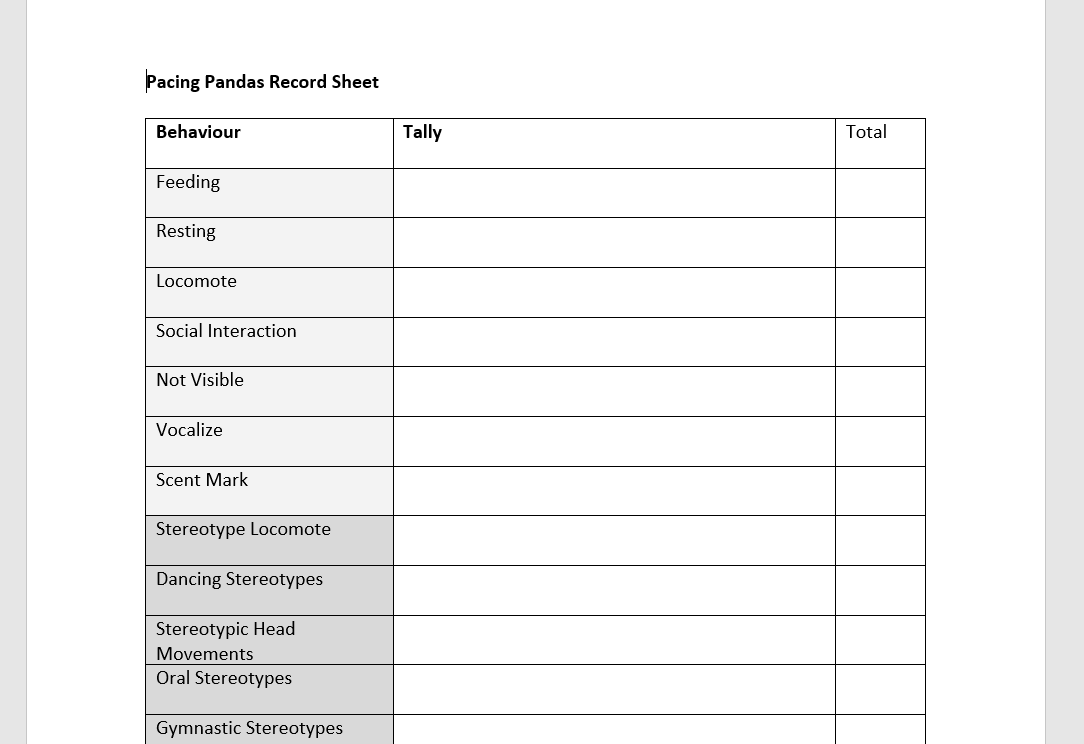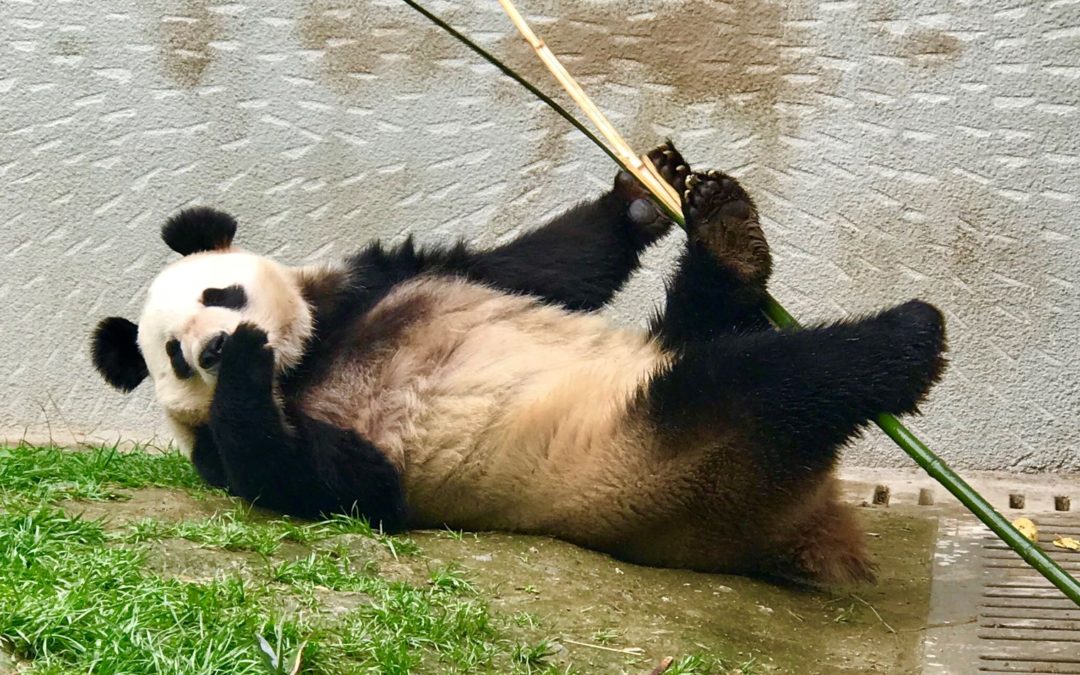Ever wonder how we measure animal behavior?
Recently, we answered the question ‘’Why Animal Behavior?’’
Now it’s time to understand how we record this behavior. In the previous blog, we introduced the ethogram as the selected method used to record observed behavior.
What does an Ethogram allow us to do?
With an ethogram, we are able to quantify an element, pattern, or sequence of behavior using:
- Latency = time from start of recording to the onset of the first occurrence of the behavior.
- Frequency = number of occurrences of the behavior per unit time
- Duration = length of time for which the behavior lasts (total, average etc.)
- Intensity = defined according to behavior (e.g. how loud a giant panda vocalizes).
Many of our Citizen Scientists will recognize the tally sheet below. Using the Pacing Pandas ethogram, they are quantifying the frequency of behaviors.

Curious about our Pacing Pandas Citizen Science?
Come try your hand at being a Panda Scientist and help us collect behavior data for our Pacing Pandas Citizen Science Project!
How do we Create an Ethogram?
The Pacing Pandas Ethogram was determined based on normal and stereotypic behaviors that are commonly observed in giant pandas in captivity. These behaviors are then grouped into categories. For example, recording “Gymnastics Stereotype” would mean a bear was observed performing a stereotypic role, stereotypic somersault or sit-up.
In the field, we customize our ethogram to each of our projects using the Animal Behavior Pro App. This allows us to create an ethogram that is either very extensive or very minimal depending on our needs.
When creating an ethogram for animal behavior, there are two things we need to consider: how we sample and how we record. Sampling typically refers to “who” we are going to watch and “when” we watch them. Sometimes this can be several individuals, a single subject, or a particular behavior. Recording typically refers to “how” we watch the subject(s).
Types of Sampling
Type 1: Ad libitum sampling:
The recorder notes all visible behavior and activity that seems relevant. There are no constraints on which animal to watch. This rule is very useful for preliminary observations.
Type 2: Focal animal sampling:
The recorder chooses one individual (or any other unit, e.g. a group of animals) and records all behaviors performed by the individual in a specified time window. This is probably the most common and most useful rule, but can be time consuming if many individuals need to be sampled.
Type 3: Scan sampling
The recorder notes the behavior of many individuals at once at regular time intervals. This rule normally limits the number of behavioral categories which can be used, since the time to note the behavior of all individuals should be as short as possible.
Type 4: Behavior sampling:
The observer notes all the occurrences of a specific behavior, together with who is performing it. This method is used to quantify the occurrence of important rare behaviors.
Types of Recording
Type 1: Continuous recording
All behaviors are recorded with information about the time and duration of occurrence. This rule gives the most accurate estimate of frequencies, latencies and durations of behaviors and the records obtained contain the most information about the behavior.
Type 2: Sequence recording
Continuous recording without time information (i.e. this rule only gives frequencies and succession of behaviors).
Type 3: Instantaneous sampling
The observation session is divided into short intervals by sample points, and at each sample point the recorder notes if the behavior is occurring. The measure obtained is the proportion of sample points in which the behavior occurred.
Type 4: One-zero sampling:
The observation session is divided into short intervals, and at each sample point the recorder notes if the behavior has occurred during the previous interval. The measure obtained is the proportion of sample intervals in which the behavior occurred, which is not a true duration or a true frequency.

PDX Wildlife Team


I’m glad you guys are back! In what less-than-obvious ways has the pandemic affected your panda watching activity?